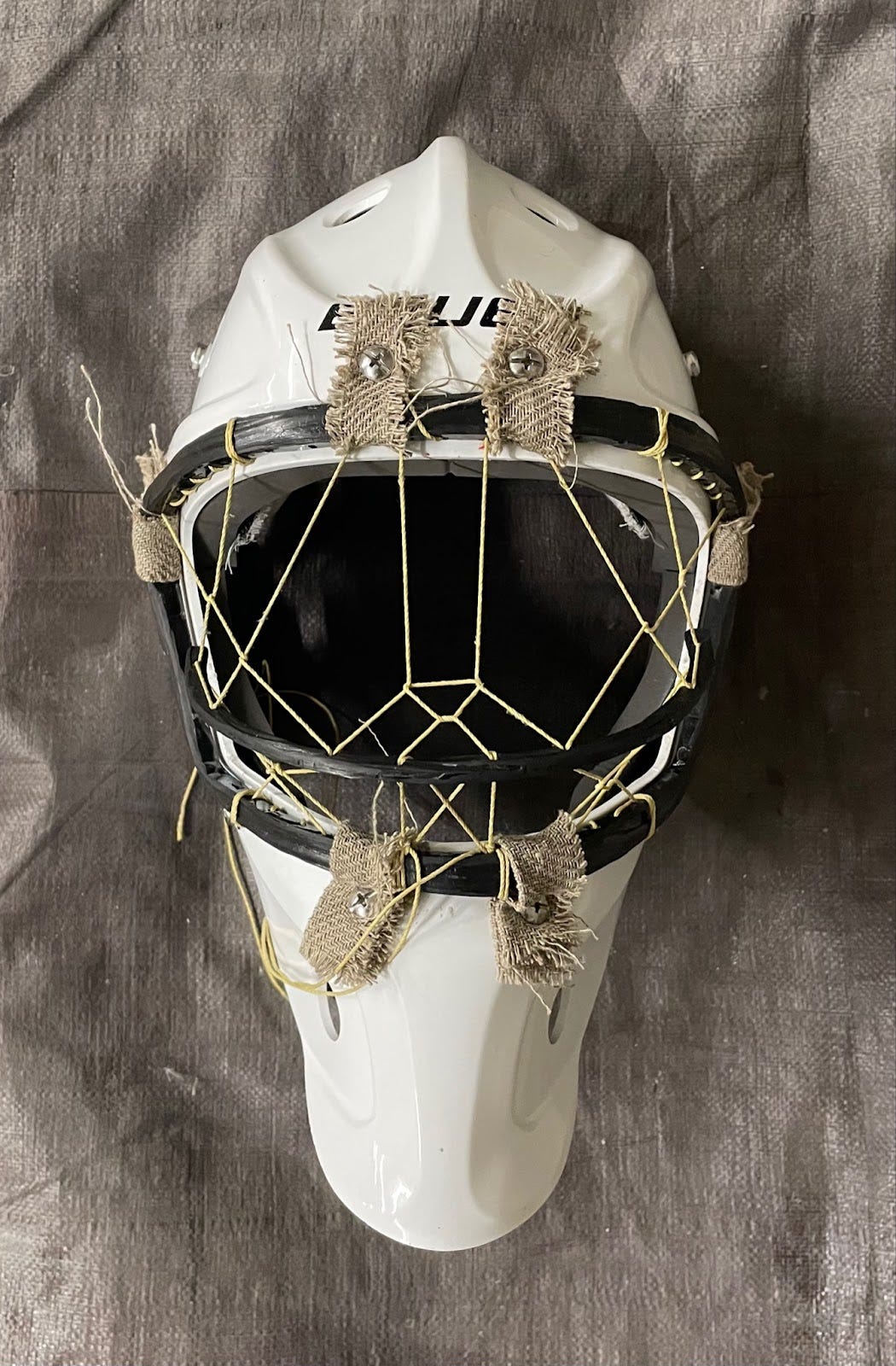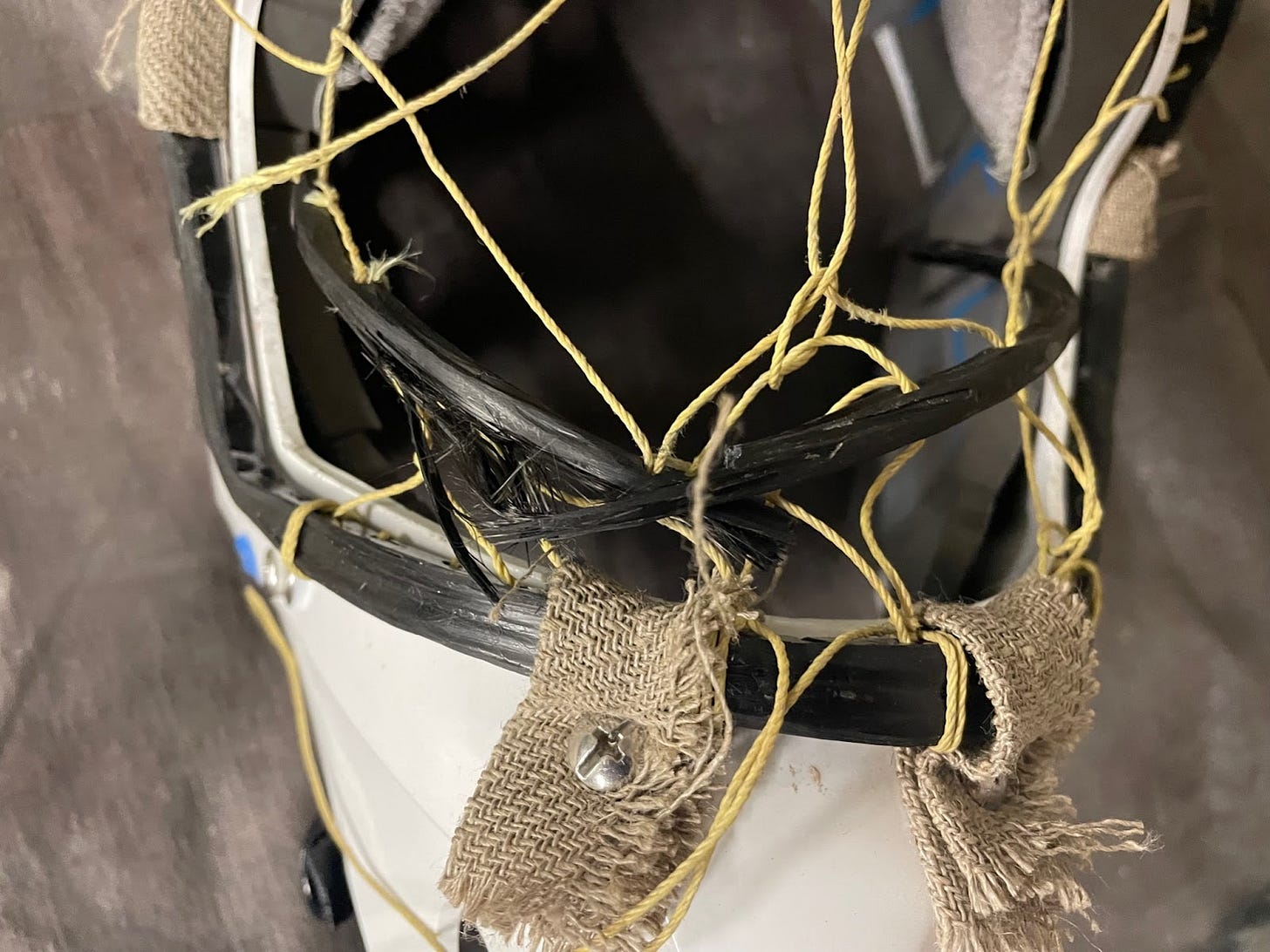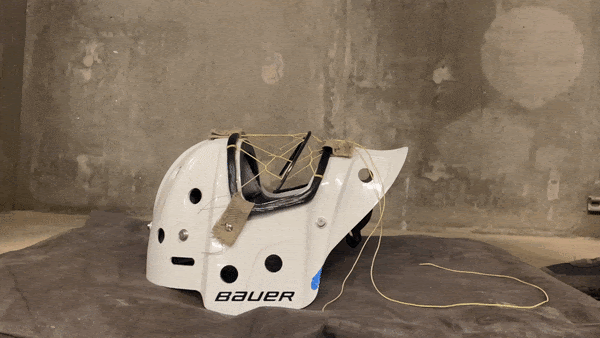An Inventor's Quest for the NHL Pt. 9
A Rough Week
This series follows my attempt to develop a product that I dream of getting into the NHL. Previously on the Quest: Part 1, Part 2, Part 3, Part 4, Part 5, Part 6, Part 7, Part 8
This week, I felt like giving up. It was strange, because I didn’t have any catastrophic failures — only average ones. Nothing that I experienced should have triggered my growing sense of despair, but there it was.
In brief, here’s what happened this week:
I made a cage with a new thread pattern in an attempt to get around the issues I had last week, where the crossbar moved on impact. I tried to lock down the crossbar by using the tension of the thread rather than the friction of knots.

I tested the new cage. I dropped a three pound weight on it a few times with no issues, which was an improvement. I then tried dropping six pounds (the equivalent of a puck traveling 50 mph) and promptly broke the crossbar. This was not unexpected. I hadn’t done a great job of fully wetting out all of the carbon fiber with epoxy and those dry spots were an obvious weak point.
I made and installed a new crossbar and resumed the testing. This time, the cage withstood eight drops of the six pound weight before the crossbar slipped down the threads on the ninth.
All in all, it was a reasonable week of results. Sure, there were failures but they clearly showed that my design was progressing. What used to happen with a 25 mph shot was now happening at a 50 mph shot.
So what was I so discouraged? It took me a while to figure out what my gut was trying to tell me.
Earlier in the week, I had noticed how bouncy my cage was compared to a metallic cage. Something about that had apparently annoyed me, but what?
The mystery started to unravel when something told me to take a closer look at the equation for impulse.
Impulse (force * time) describes what happens in a collision. Picture standing still on rollerblades when your friend pushes you from behind. In doing so, your friend applies a force to you over some time (i.e. apply an impulse) to get your mass moving. The harder the push or the longer the push, the faster you’ll end up going.
Back when I was starting out the project, I had looked at impulse, but I’d only really paid attention to the left side of the equation. That’s the side that says that, if everything else is equal, increasing the time of the collision reduces the force of the collision. The common example is crumple zones in cars, which increase the time of the collision to reduce the force on occupants.
That’s how I was thinking about my cage. By adding in a little bit more flexibility, the time of the collision between the puck and the cage would go up, and the force would go down.
But looking at it this time around, I realized that the right side of the equation might actually be working against me. Imagine that the velocity of a puck goes from 50 mph to 0 mph when it hits a metallic cage. The change in velocity is 50 mph.
Now imagine that the the velocity of a puck goes from 50 mph to 50 mph in the other direction when it bounces off my Kevlar cage. The change in velocity is 100 mph (50 – -50 = 100), or double that of the metallic cage. That means that the force would be twice as high as well and the whole basis for my design is in jeopardy. Even if I could increase the time of the collision significantly, my design wouldn’t have nearly as much of an advantage as I’d originally thought.
It’s like if someone threw a punch at your face. You have two options. Option 1: you can parry the punch. Option 2: you take the punch full in the face, but you get to add padding to their fist. That’s what the two different designs feel like at the moment, though much less clear-cut. It seems like the metallic cage parries the puck (lower change in velocity). Whereas my cage might be catching the puck (higher change in velocity), but cushioning it better (more time).
It’s still not clear to me which approach is better. I find impacts and collisions difficult to think about. There’s so much going on in such a short amount of time with so many variables at play. That’s why I’ve taken such a experiment-heavy approach to this project.
An experiment will be my way forward here too. I need to figure out if my cage results in higher forces than a metallic cage. Though all my focus has been on potential benefits to visibility, I will not make something that could increase the potential for head injury.
So I’ve arrived, somewhat unexpectedly, at a major crossroads. If an experiment shows that my cage transmits more force than a metallic cage, this project is probably dead. If not, the quest continues. Let’s see what happens.
Thanks for reading,
Surjan






